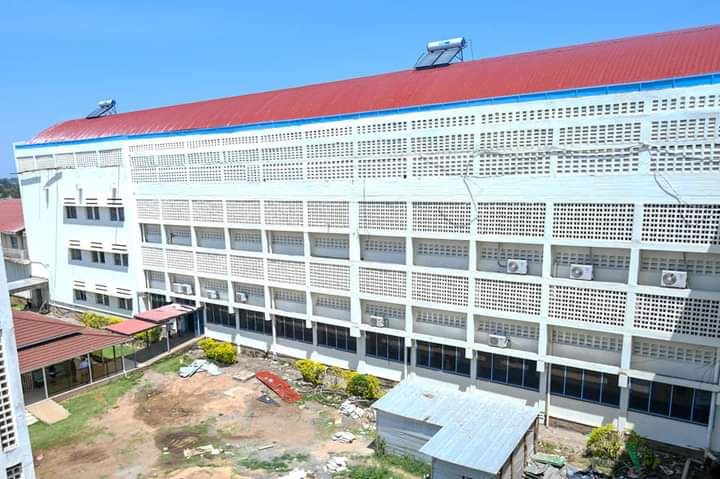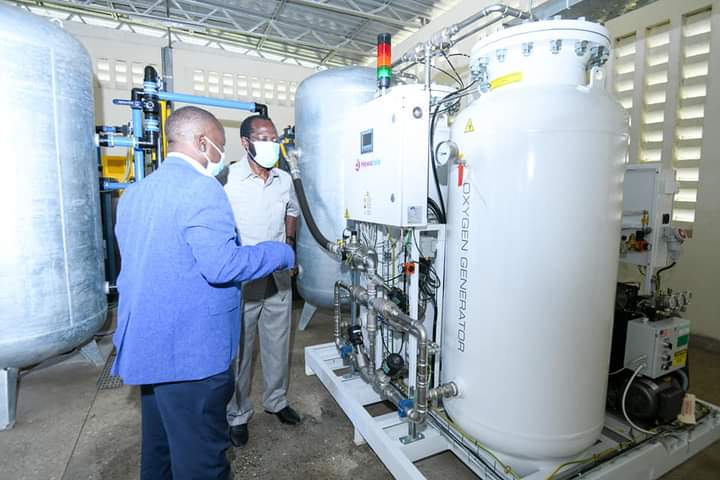KISUMU, Kenya, Oct 11- When the first case of Covid-19 was reported in the country in March last year, many feared that the healthcare systems in Nyanza counties would collapse.
Several counties in the region were barely struggling to keep up their operations as persistent strikes of health workers, lack of essential drugs as well as poor infrastructure threatened the sector with a total collapse.
The situation had been worsened by the failure of some of the county chiefs to reach an agreement with the discontented health workers with the situation leaving most healthcare systems in intensive care units.
Many believed the systems would crumble under the weight of rising cases of infections of the virus.
Now, however, responses geared towards addressing the pandemic have come as a blessing to the region and have drastically transformed health care systems in what is likely to leave a permanent mark on a sector vital in saving millions of lives.
In almost all the six, Nyanza counties, health care systems have improved significantly as county chiefs went on an overdrive to improve their health care services.
A spot check by Shahidi News across four counties in the region as well as a number of health experts established that the healthcare systems are now on a path to boosting better access to healthcare systems.
In Kisumu, a mega infrastructural upgrade is going on in its major facilities including Jaramogi Oginga Odinga Teaching and Referral Hospital (JOOTRH) which the county hopes to have upgraded to a level six hospital.
An expansion of the facility including the construction of an additional floor is almost complete as authorities also rush to complete the construction of a cancer center.
Built-in 1969 by Russians, the facility had been in a sorry state. About a month before the pandemic struck, the facility was deserted with only its mortuary functional following a strike by health workers.
But when it was operational, patients were compelled to share beds in some wards as drug and blood shortages also hit hard.
A spot check at the facility now paints a different picture. The infrastructural upgrade is already evident and clear for everyone to see.
The construction of a comprehensive cancer center worth Sh150 million is at an advanced stage while the construction of a surgical unit is also on course.
Governor Anyang’ Nyong’o’s administration has also completed the construction of the Neurosurgery ward and the plastic surgery ward.
According to officials, the pandemic unlocked huge amounts of money for an infrastructural upgrade with JOOTRH alone receiving some Sh400 million to improve part of its infrastructure from the national government.
Governor Nyong’o said that his administration has also completed the installation of a new oxygen plant capable of producing 600 litres of oxygen per minute.
The oxygen plant is part of the efforts to respond to Covid-19 emergencies at a time when the region was grappling with a dire oxygen shortage in ICU units.
“Our focus is to ensure that the entire County will be Oxygen sufficient to help us combat Covid-19 and other related ailments. We will buy a van to help deliver the gas cylinders in all our seven sub-counties,” said Nyong’o.
In other facilities across the county, the county government has also invested heavily in various infrastructures including new maternity units to help revamp the sector.
According to the chief officer of health Fredrick Oluoch, at Chulaimbo county Hospital, the construction of a new maternity wing is almost complete.
“The department strives to complete and equip the proposed theater by the end of this financial year as this will help improve maternal care to the mothers within Kisumu West Sub-County,” he said.
Another major breakthrough in the improvement of health services in the lakeside county is the introduction of a call center to help respond to Covid-19 emergencies.
The call center was established at the Kisumu County Referral Hospital-the second largest hospital in the county has been at the center of the Covid-19 fight and is linked to 24 ambulances.
And as the fight to reduce cases of Covid-19 continues, authorities are mulling ways to use the system to respond to other future health emergencies in the region.
But despite the developments, there is a mixed bag of fortunes as a section of residents claim the infrastructural developments are yet to translate to better health services.
A number of residents said that they still experience poor services in the county and are sometimes compelled to buy even basic drugs in chemists as well as being referred to other facilities as far as Moi Teaching and Referral Hospital in Eldoret for some tests.
Audi Ogada, the chairman of Kisumu Residents Voice said that although there have been infrastructural improvements, services are still poor over lack of enough staff.
“The progress still does not meet medication needs. The staff morale is still low and people still have to wait for several hours to be attended to,” said Ogada.
The senior resident also claimed that most of the facilities in sub-county levels are also yet to benefit from the development.
But he is not alone, other residents also claimed that despite the huge investments, they are yet to fully benefit from it.
Joseph Ochieng, a chairman of one of the boda-boda groups in Kisumu said that their members still have to dig into their pocket to fund their treatment despite Universal health care (UHC) covers and the Marwa healthcare scheme being available.
“We are happy with the upgrade but we are hoping they will improve actual services and also recruit more health workers,” said Ochieng.
Health workers also claim that despite the huge investments, little has been done to improve their welfare.
In Kisii, a major transformation in Governor James Ongwae’s administration is on the right track as the second-term governor preparing to retire next year seeks to live a lasting impression on the county’s healthcare system.
Although the county’s health sector has registered tremendous growth since 2014, the Covid-19 period provided its leadership with a new challenge to improve services.
And the chance has not gone begging, just like Kisumu, Kisii is among counties in the region that have installed new oxygen plants with an aim of addressing the problem of shortages.
Currently, plans to construct an ultra-outpatient block that will house a laboratory, a dental unit, a pharmacy, x-ray departments, state-of-the-art casualty block are at advanced stages at the Kisii referral hospital.
The move is part of plans to give the facility an infrastructural uplift to enable it to attract an elevation by the national government to a level five hospital.
In the region, Siaya which at the start of Covid-19 did not have even an ICU bed has also improved its health care systems although it is still lagging behind.
With the Covid-19 pandemic, the reality about the need to improve healthcare systems hit county leaderships hard, a situation that has now seen positive improvement in the health sector.
According to Easter Achieng, a gender activist, although there are still gaps, the infrastructural improvements hold a lot of promise.
“There is still a challenge of access to healthcare but we hope services will be improved,” said Achieng.
Want to send us a story? Contact Shahidi News Tel: +254115512797 (Mobile & WhatsApp)




